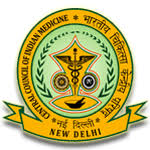Reviewed by: Dr. Yogesh D. Niturkar MD (HOM) ICR, Mumbai
Perceiving principles & concepts of various repertories is a nightmare for the students becoming practitioners. When there is a difficult subject like repertory, then as per the human nature we search for a short cut to clear the hurdle of exams which is quite obvious for average to studious learners. Hardly there are books that are written with a dual purpose i.e. of passing in exams & its application in practice. The book Logic of Repertories is one of the few books that serve this dual purpose. The book is written according to the BHMS syllabus as formulated by Central Council of Homoeopathy (CCH). The author has not only dealt with all the topics that are prescribed by CCH but also covered all the guidelines that might be required for the perceiving of principles, concepts & philosophical background of different repertories & the process of repertorization.
The book demonstrates logic behind repertorization to those who believe that the sole purpose of repertorization is just finding a remedy. On the contrary, this book gives conceptual clarity on repertorization as a phenomenon of arriving at a group of remedies after adopting a methodology of understanding the language of symptoms, analysis & evaluation of symptoms, building totality of symptoms & conversion of symptoms into rubrics then to locate appropriate rubrics under specific chapters.
The book is divided into two parts viz. Part I & Part II. The part I deals with the basic understanding about totality of symptoms, prescribing symptoms, mental symptoms, general & particular symptoms, common & uncommon symptoms, concomitant symptoms, eliminating symptoms, analysis of cause, common & uncommon symptoms, evaluation of symptoms, difficulties of taking a chronic case, record keeping & usefulness of record keeping. In a nutshell, the part one deals with different types of symptoms its analysis & evaluation, understanding cause, difficulties in chronic case taking & the significance of record keeping.
Part II deals with the evolution, principles & philosophical background of repertories i.e. history, types, plan of construction, different concepts of forming totality of symptoms & how to use the said repertory. It also deals with different methods of repertorization. The book also focuses upon scope & limitations of repertories so that the reader can make best use of the particular repertory. Author has dedicated chapters on Boenninghausen, Kent, Card & Synthetic repertory with examples of short cases & sample questions for practice. At the end of few chapters questionnaire is given and I would request the publishers to add questions after each chapter for the benefit of students.
From teachers & practitioners perspective, the best part of the book lies in few of the chapter’s viz. Discrimination of Rubrics – Kent’s Repertory: – here rubrics that are having similar meanings but after referring to dictionary the words differ from each other in meaning. Author has painstakingly given discrimination of 443 rubrics from all sections of Kent’s repertory. Discrimination of these rubrics is needed for the selection of the similimum.
Another chapter that interests me is Difficult Words Explained – Kent’s Repertory: – under this chapter 593 words from Kent’s repertory are explained. Author has made efforts to bring all the difficult words together with their appropriate meanings for easy reference & accurate conversion into rubrics.
There is another interesting chapter on Comparison of Chronic Miasms written in alphabetical order that covers comparison between miasms under mental & physical symptoms, particular symptoms, pathognomic symptoms & the disease per se. This knowledge of chronic miasms under various headings will help in differentiation of remedies as well as for selection of antimiasmatic remedy in order to remove or deal with the miasmatic load in each individual case.
Throughout the book author has dealt with the subject of repertorization so that the learner or practitioner can arrive at a similimum. All the topics are interdependent and needs through grasping of each individual chapter so that the learning can be applied as per the demands of the case.
This book fulfills the needs of students, teachers, examiners & practitioners of Homoeopathy. Therefore, it is the must have book for students & practitioners of Homoeopathy.
About the reviewer: Dr. Yogesh D. Niturkar, MD (Hom) ICR Classical Homoeopathic Practitioner at Mathura Homoeopathic Clinic, Latur, Assistant Professor in the Department of Organon of Medicine & Philosophy, V. K. Homoeopathic Medical College & Hospital, Latur, Maharashtra. He is clinician, teacher, author, speaker & reviewer of homeopathic articles.





